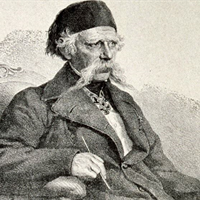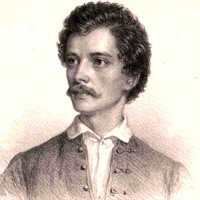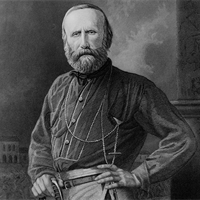Belgrade Fortress - From Doksat to the Gondola
- Ratomir Veselinović
- 6 min
- 3 November 2022.
- Entertainment
Every city has such places - places where citizens gather, stroll, spend evenings with a guitar, and enjoy the view... Some people court and fall in love there... Some play chess, some paint...
There are also places that are engraved in history among those with the heavy burden of wars, battles, almost unconquerable... Places where, with just a little scratch, history surfaces, although it can be found at every step even without scratching. There are such places that should not be touched, changed, or altered for all these reasons. And they shouldn't be! New buildings are not usually constructed in these places, bulky and noisy restaurants are avoided, megalomaniac projects as well. They should be preserved and nurtured because they represent a legacy from distant past and bear witness to times and people greater than us. There are such places in every city. And our Belgrade has them too, and they can all be recognized in the Belgrade Fortress and Kalemegdan Park.
In the midst of the current events regarding the works on the Belgrade Fortress, let's remind ourselves of the most important structures in that area. These buildings are witnesses of past times, and most of them are protected by the state as such. Just like the entire Belgrade Fortress.
It is worth reminding ourselves of the difference between the terms Kalemegdan (not Kalimegdan!) and the Belgrade Fortress. Kalemegdan is now the name used for the park around the Belgrade Fortress, and it originated from the combination of the words "kale," meaning city or fortress in Turkish, and "megdan," which denotes a field. The Belgrade Fortress is located within the walls that surround it, and it is accessed through one of the numerous gates.
The idea of designing a park on the former city field around the fortress was presented by Emilijan Josimović, who began its realization with the first urban planning of the city in 1867. The first greenery was planted a few years later, and the first paths were arranged in the form of an "English park." At the turn of the century, the first monuments to giants were erected in the park, such as the monuments to Đura Daničić, Vojislav Ilić, and Đura Jakšić, and in later periods to Branislav Nušić, Stevan Mokranjac, Miloš Crnjanski, Simeon Roksandić, and many others.
The park is also home to the Monument of Gratitude to France, a work by Ivan Meštrović from 1930. In its place, there was a monument to Karađorđe for a very short time, erected in 1913. It was removed in 1916, and in its place, the Austrian occupation authorities planned to erect a monument to Emperor Franz Joseph. However, due to the outcome of the war, the monument was never erected. Instead, a bell was cast from the monument, which now adorns the Ružica Church.
The park's design also involved the first female architect in Serbia - Jelisaveta Načić. In 1909, she provided an urban plan for the arrangement of Mali Kalemegdan (from the Cvijeta Zuzorić Pavilion towards the Zoo) according to the project by architect Dimitrije Leka. She also designed the Sava promenade, the fence, and the monumental Baroque staircase with a fountain at its end towards Pariska Street. Until 1928, the park extended to the present-day grand staircase on the opposite side of the promenade. The lower terrace where the graves of national heroes are located today was a neglected space until that time. In that year, Aleksandar Kostić, a horticulture engineer, arranged the terrace and designed a large staircase, which was recently demolished to make way for a more beautiful and older structure. Kostić was also the first director of the Zoo.
The Belgrade Fortress is adorned with around fifteen gates, most of which are still well-preserved to this day. One of the oldest is the Zindan Gate, built in the 15th century. It consists of two towers and a gate between them. The towers feature the finest examples of mašikula (machicolation) - protrusions at the top of the towers used to pour boiling oil onto enemies. The towers are divided into several floors, with the lowest one serving as a dungeon, hence the name with that meaning in Turkish. In front of it, towards the Zoo, is the Leopold Gate from the 17th century.
The Despot's Gate and Dizdar Tower are also from the 15th century, from the time of Despot Stefan. The gate was once the main entrance to the medieval fortress, and in front of it was a drawbridge that was raised in case of danger. Dizdar Tower is now used by the Belgrade Observatory for public sky observation.
The Stambol Gate was built in the 18th century and is located on the Great Ravelin. At that time, it served as the main entrance to the fortress. In front of it, there was also a drawbridge that no longer exists today. Nearby are two more gates - Karađorđeva Gate and Outer Stambol Gate. The Karađorđeva Gate is closer to the Monument of Gratitude to France and got its name because Karađorđe entered the fortress through it during the First Serbian Uprising. The Turks bricked it up in 1813, and it was reopened after World War II.
Sahat Gate and Tower were built during the Austrian occupation of the city in the 18th century. Like all gates from that period, it contains casemates for accommodating soldiers and weapons. The tower features a clock, giving the gate its name.
Kralj Gate was built in the Baroque style during the Austrian occupation on the site of the former medieval gate.
In the Lower Town, there are the Vidin Gate and the Gate of Charles VI. The Gate of Charles VI was erected in 1736 as an arch at the entrance to the Lower Town. It was designed by Nikola Doksat de Mores, who carried out extensive works on the fortress during the Austrian period.
Several religious buildings are located within the fortress area.
The Church of the Nativity of the Most Holy Mother of God (Ružica Church) served as a gunpowder magazine during the 18th century. After the departure of the Turkish army from the fortress in 1867, the current church was built, and the name Ružica was given based on a legend that there was a church with that name on the fortress during the Middle Ages. At the entrance to the church, there are two figures of warriors, a medieval knight and a Serbian soldier from World War I, created by the renowned Russian architect Nikolay Krasnov. The central chandeliers in the church are made of bullets from World War I.
The Church of Saint Petka is located on the site of an old chapel from 1867. It was built in 1936 according to the design by architect Momir Korunović. During the excavation of the foundation, the bones of the defenders of Belgrade from World War I were found and transferred to a ossuary near Jakšić Tower.
Damad Ali Pasha's Tomb is the burial place of Grand Vizier Ahmed III, the "Conqueror of Morea." He died near Petrovaradin, and his body was later transferred to Belgrade. This is also one of the rare examples of Turkish architecture in the city.
The Victor Monument was erected in 1928 and is the work of sculptor Ivan Meštrović. It was originally intended to be a part of the Terazije Square redevelopment project by Jelisaveta Načić, where the Victor would be located in the center of the square. However, due to public outcry, the monument was never placed there and waited until the end of the war. It was finally installed at its current location during the commemoration of the tenth anniversary of the breakthrough of the Salonika Front.
These are just some of the cultural monuments in Belgrade Fortress and Kalemegdan Park. It is also worth mentioning Nebojša Tower (meaning "Do not fear the light"), the Turkish bathhouse, the ruins of the Metropolis, the gunpowder magazine, the building of the Military Museum (originally built for the purposes of the Military-Geographical Institute), and more. There is much to be written about them. Numerous books, studies, and research have been dedicated to their value and significance for our culture and history, and not without reason. Unfortunately, we are witnessing the increasing devastation of Belgrade's historical core in favor of commercial construction aimed at attracting more tourists to the city.
It is our duty as citizens, even if we believe that we cannot do anything, to at least remember the time when our greatest architects created a park out of a wasteland and sculptors created their finest works specifically for this area—the undisputed symbol of our Belgrade.


